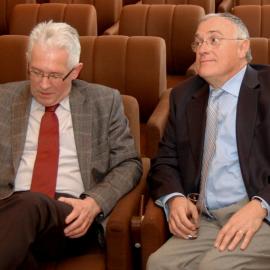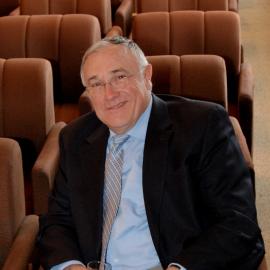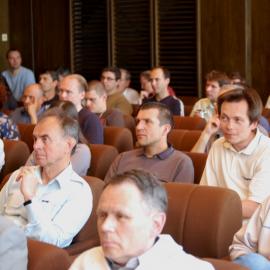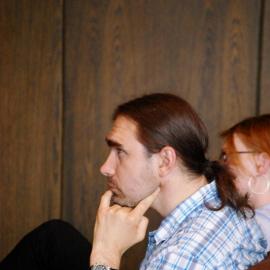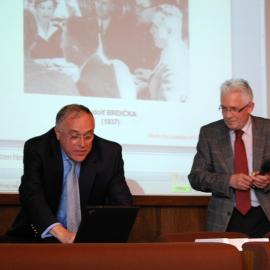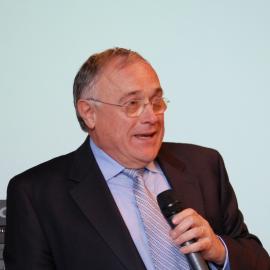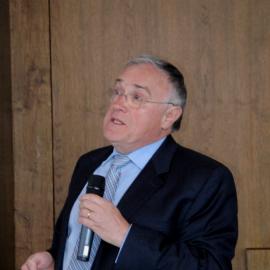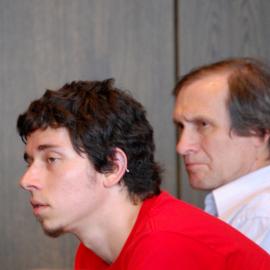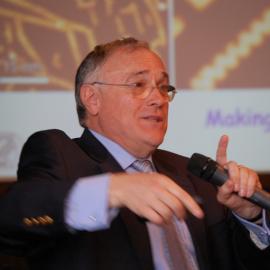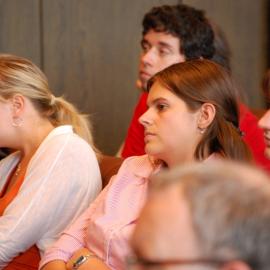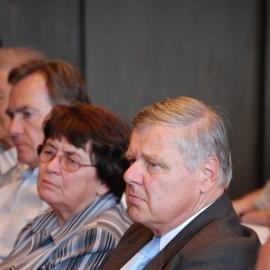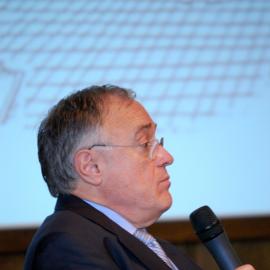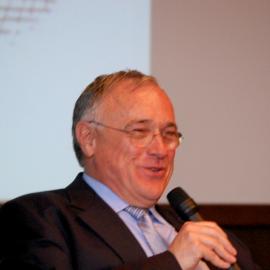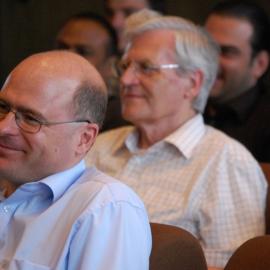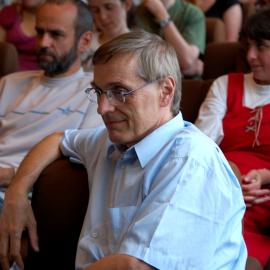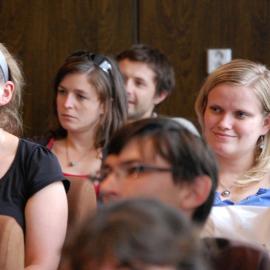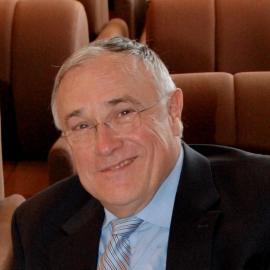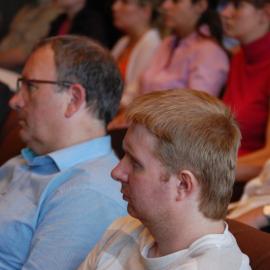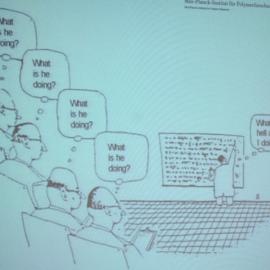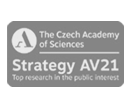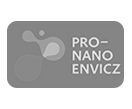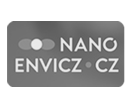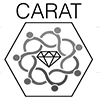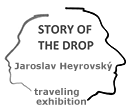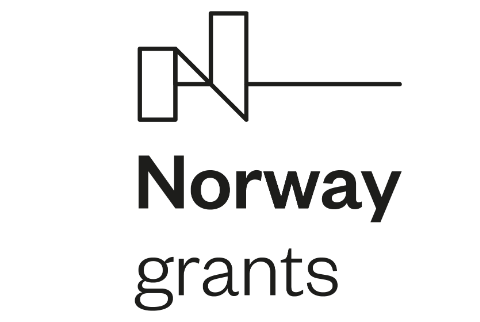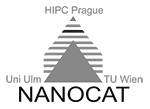Klaus Müllen (Max-Planck Institute, Mainz, Germany)
The 21st Annual Rudolf Brdička Lecture was held on June 14, 2011 at 14:00 in Brdička hall.
Carbon Materials and Graphenes
Klaus Müllen
Max-Planck-Institute for Polymer Research, Mainz, 55128, Germany
Research into energy technologies and electronic devices is strongly governed by the available materials. We introduce a synthetic route to graphenes which is based upon the cyclodehydrogenation (“graphitization”) of well-defined dendritic (3D) polyphenylene precursors. This approach is superior to physical methods of graphene formation such as chemical vapour deposition or exfoliation in terms of its (i) size and shape control, (ii) structural perfection, and (iii) processability (solution, melt, and even gas phase). The most convincing case is the synthesis of graphene nanoribbons under surface immobilization and in-situ control by scanning tunnelling microscopy.
Columnar superstructures assembled from these nanographene discs serve as charge transport channels in electronic devices. Field-effect transistors (FETs), solar cells, and sensors are described as examples.
Upon pyrolysis in confining geometries or “carbomesophases”, the above carbon-rich 2D- and 3D- macromolecules transform into unprecedented carbon materials and their carbon-metal nanocomposites. Exciting applications are shown for energy technologies such as battery cells and fuel cells. In the latter case, nitrogen-containing graphenes serve as catalysts for oxygen reduction whose efficiency is superior to that of platinum.
Müllen, K., Rabe, J.R., Acc. Chem. Res. 2008, 41, (4), 511-520;
Wang, X., Zhi, L., Müllen, K. Nano. Lett. 2008, 8, 323-327;
Feng, X.; Chandrasekhar, N.; Su, H. B.; Müllen, K., Nano. Lett. 2008, 8, 4259.;
Pang, S.; Tsao, H. N.; Feng, X.; Müllen, K., Adv. Mater. 2009, 31, 3488;
Feng, X., Marcon, V., Pisula, W., Hansen, M.R., Kirkpatrick, I., Müllen, K., Nature Mater. 2009, 8, 421;
Cai, J., Ruffieux, P., Jaafar, R., Bieri, M., Braun, T., Blankenburg, S., Muoth, M., Seitsonen, A. P., Saleh, M., Feng, X., Müllen, K., Fasel, R., Nature 2010, 466, 470-473;
Yang, S., Feng, X., Zhi, L., Cao, Q., Maier, J., Müllen, K., Adv. Mater. 2010, 22, 838; Liu, R., Wu, D., Feng, X., Müllen, K., Angew. Chem. Int. Ed. 2010, 49, 2565;
Käfer, D., Bashir, A., Dou, X., Witte, G., Müllen, K., Wöll, C., Adv. Mater. 2010, 22, 384;
Diez-Perez, I., Li, Z., Hihath, J., Li, J., Zhang, C., X., Zang, L., Dai, Y., Heng, X., Müllen, K., Tao, N. J. Nature Commun. 2010, DOI: 10.1038.
Prof. Dr. Klaus Müllen
joined the Max-Planck-Society in 1989 as one of the directors of the Max-Planck Institute for Polymer Research. He obtained a Diplom-Chemiker degree at the University of Cologne in 1969 after work with Professor E. Vogel. His Ph.D. degree was granted by the University of Basel, Switzerland, in 1972 where he undertook research with Professor F. Gerson on twisted pi-systems and EPR spectroscopic properties of the corresponding radical anions. In 1972 he joined the group of Professor J.F.M. Oth at the Swiss Federal Institute of Technology in Zürich where he worked in the field of dynamic NMR spectroscopy and electrochemistry. He received his habilitation from the ETH Zürich in 1977 and was appointed Privatdozent. In 1979 he became a Professor in the Department of Organic Chemistry, University of Cologne, and accepted an offer of a chair in Organic Chemistry at the University of Mainz in 1983. He received a call to the University of Göttingen in 1988.
Some photos from lecture...
(K.Stejskalová, archive JHI)



